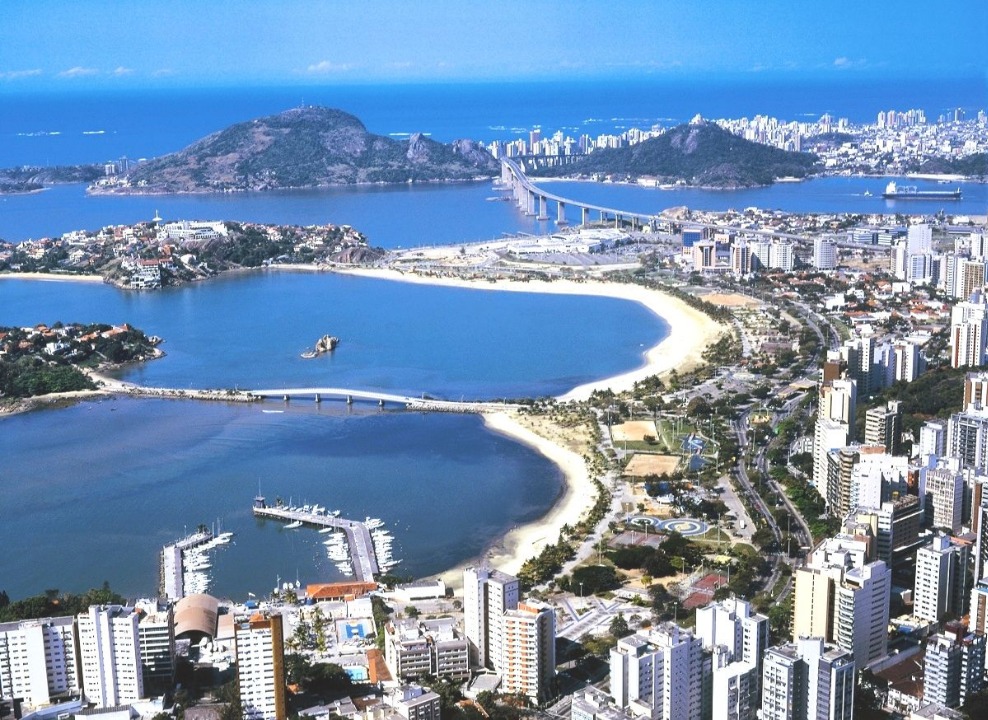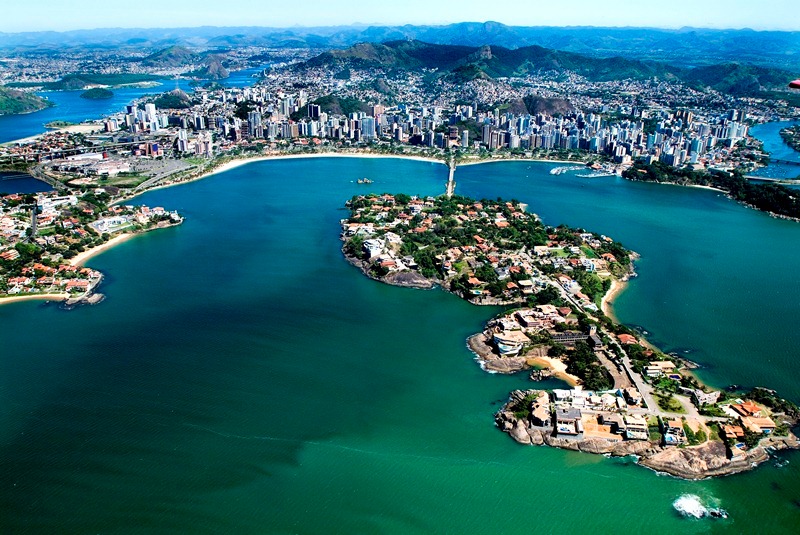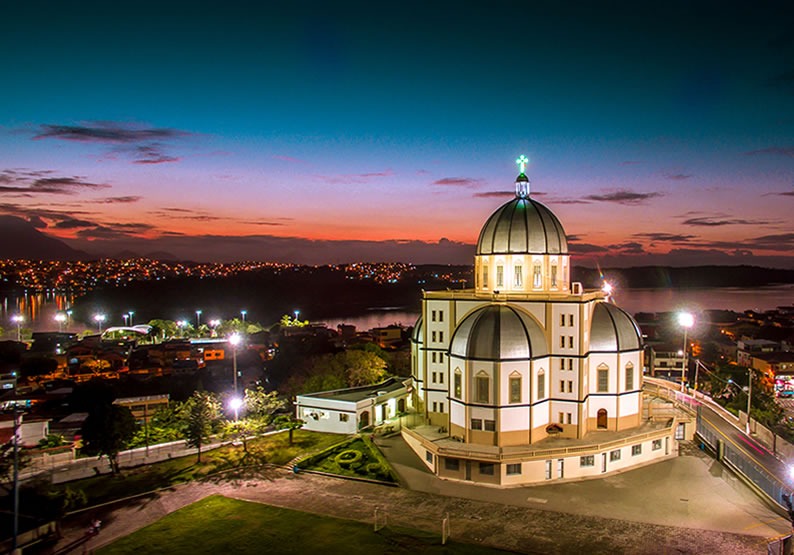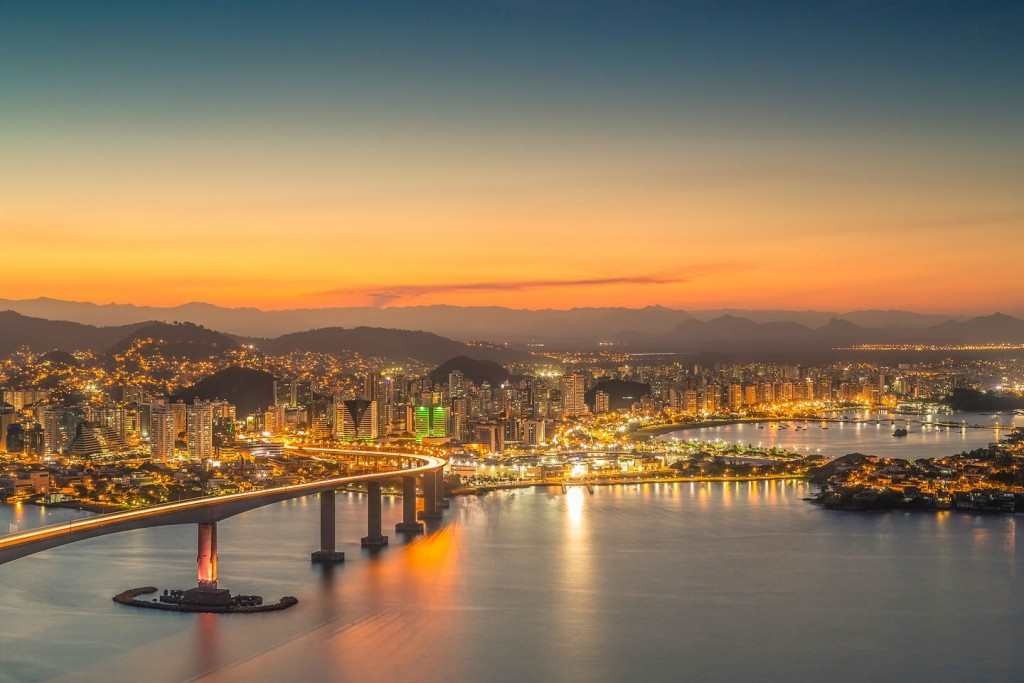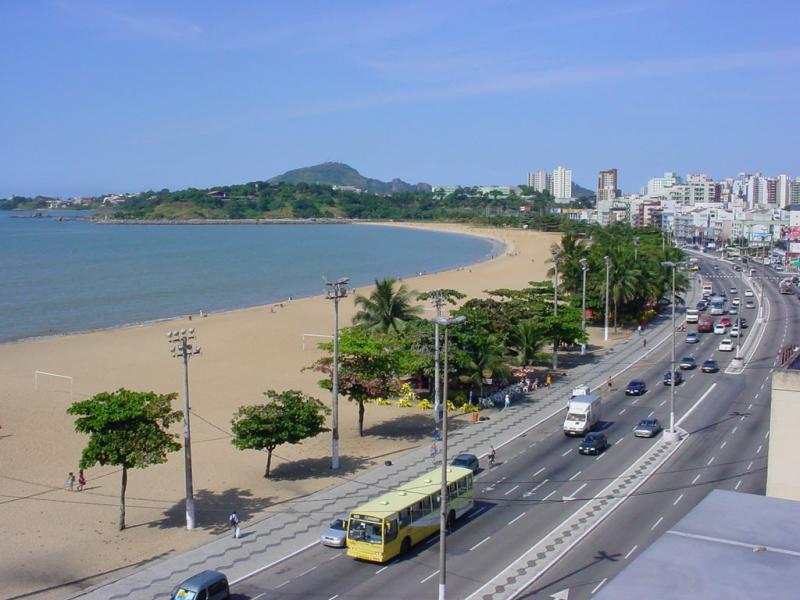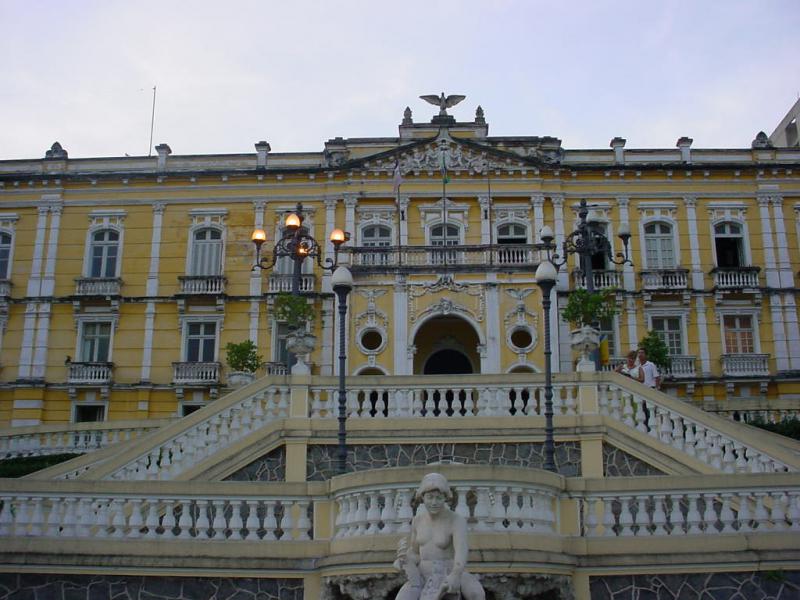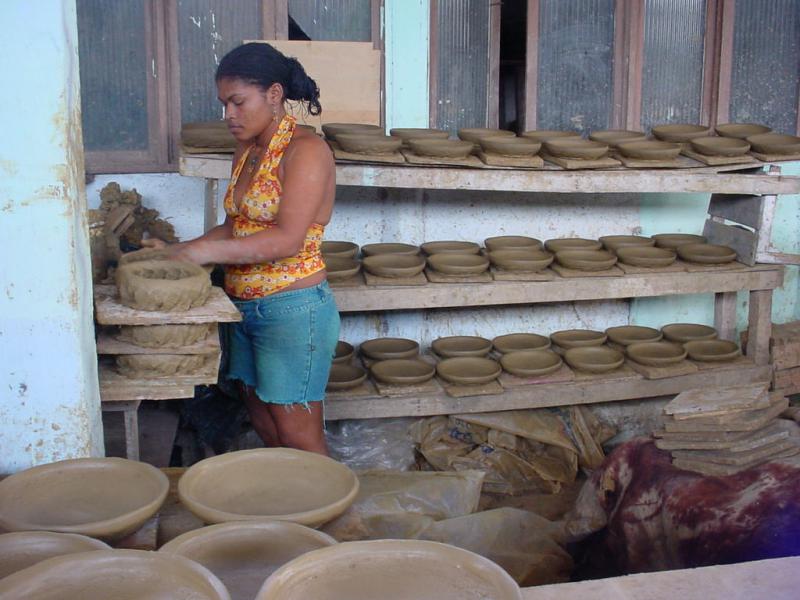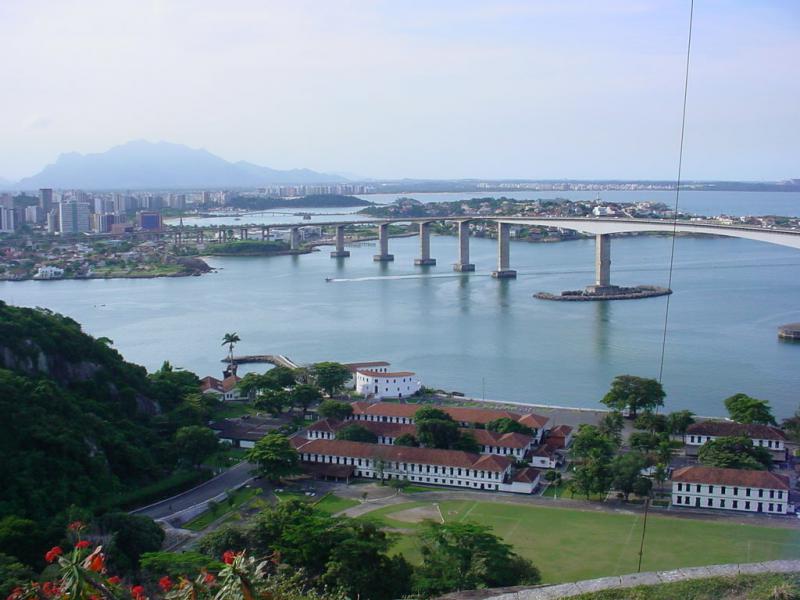Pictures of: Vitória do Espírito Santo
Location map
Airports
Hotels and other Accommodation
What to visit
Where to Eat
Consulates & Embassies
World Nomads
The Travel Insurance with the largest coverage

The Travel Insurance with the largest coverage

Vitoria
Vitoria, founded in 1551 on the island of Guaananira or Ilha do Mel, named after the indigenous peoples living there, is the capital of the state of Espírito Santo, the second oldest capital in Brazil, and is located on a small island within a bay, where some rivers meet the sea.
Victory is surrounded by the Bay of Victory. It is an island of marine fluvial type formed by an archipelago composed of 33 islands and by a continental portion, totaling 105 square kilometers.
Victory is surrounded by the Bay of Victory. It is an island of marine fluvial type formed by an archipelago composed of 33 islands and by a continental portion, totaling 105 square kilometers.
Tourism
The growth of business tourism has not taken from Vitória the charm of its beaches or its historical and gastronomic traditions. On the contrary - it encouraged the improvement of service infrastructure, such as new hotels and restaurants, as well as enhancing leisure options.
The landscapes of the city enchant who arrives, whether by plane, ship or by land.
The visitor is welcomed as a friend who returns to the city, which presents a remarkable hospitality - a differential of the resident of Vitoria. In Vitória the tourist has a modern commercial center and provider of quality services. They are modern hotels and event centers, as well as good bars and restaurants.
The extensive beach of Camburi, with its promenade with gardens, kiosks and bike path is guaranteed, also, due to a sailing school and a port where boat trips depart.
Hortomercado has been enlarged with a center of shops and bars. Nearby is the exit for the Island of Boi, where are the most quiet beaches of the capital.
The epicenter of tourist hustle and bustle, it remains the famous Canto beach, full of bars and restaurants in the area known as the Bermuda Triangle. The buzz is also happening in the day due to the boardwalk, the craft fair on Sundays, the kiosks of the Curva da Jurema and the calm waters sought by the nautical sports fans.
Speaking of activities on the water, the coastal zone that goes from Vitoria to Guarapari is one of the best in the world for the sport fishing of marlim-branco and marlim-azul. Between the months of October and February, international championships bring together athletes from several countries that stir the region.
As for cultural tourism, all roads lead to the Upper City. Founded in 1551, Vitoria still preserves some heritage sites of the time. The tour - best done on foot - features the Anchieta Palace, the Baroque São Gonçalo Church, the 1920s Metropolitan Cathedral and Neo-Gothic style and the Santa Luzia Chapel, the oldest building in the city, the Convent of San Francisco, the Churches of Our Lady of Carmo and the Rosary and the Carlos Gomes Theater, inspired by the famous Scala of Milan.
One of the most unusual tours of the region is what leads to the Zen Monastery Morro da Vargem, in the nearby city of Ibiraçu.
On Sundays, the space opens the doors to the general public, free of charge. At the top of a hill, visitors find a meditation stronghold in the middle of the Atlantic Forest, where the monks live. It is they who guide the tour through the five temples of the place - go in slippers, since you have to be barefoot to get into some.
The landscapes of the city enchant who arrives, whether by plane, ship or by land.
The visitor is welcomed as a friend who returns to the city, which presents a remarkable hospitality - a differential of the resident of Vitoria. In Vitória the tourist has a modern commercial center and provider of quality services. They are modern hotels and event centers, as well as good bars and restaurants.
The extensive beach of Camburi, with its promenade with gardens, kiosks and bike path is guaranteed, also, due to a sailing school and a port where boat trips depart.
Hortomercado has been enlarged with a center of shops and bars. Nearby is the exit for the Island of Boi, where are the most quiet beaches of the capital.
The epicenter of tourist hustle and bustle, it remains the famous Canto beach, full of bars and restaurants in the area known as the Bermuda Triangle. The buzz is also happening in the day due to the boardwalk, the craft fair on Sundays, the kiosks of the Curva da Jurema and the calm waters sought by the nautical sports fans.
Speaking of activities on the water, the coastal zone that goes from Vitoria to Guarapari is one of the best in the world for the sport fishing of marlim-branco and marlim-azul. Between the months of October and February, international championships bring together athletes from several countries that stir the region.
As for cultural tourism, all roads lead to the Upper City. Founded in 1551, Vitoria still preserves some heritage sites of the time. The tour - best done on foot - features the Anchieta Palace, the Baroque São Gonçalo Church, the 1920s Metropolitan Cathedral and Neo-Gothic style and the Santa Luzia Chapel, the oldest building in the city, the Convent of San Francisco, the Churches of Our Lady of Carmo and the Rosary and the Carlos Gomes Theater, inspired by the famous Scala of Milan.
One of the most unusual tours of the region is what leads to the Zen Monastery Morro da Vargem, in the nearby city of Ibiraçu.
On Sundays, the space opens the doors to the general public, free of charge. At the top of a hill, visitors find a meditation stronghold in the middle of the Atlantic Forest, where the monks live. It is they who guide the tour through the five temples of the place - go in slippers, since you have to be barefoot to get into some.
Gastronomy
Victoria is known for its cuisine. Legend has it that the clay pot, to give a good moqueca, must have been made by the so-called Paneleiras de Goiabeiras. Produced by women from the neighborhood in an immense shed, the pieces - in addition to pot, there are pots, cauldrons and ashtrays - are made in a handmade way.
The technique is indigenous heritage and passed down from generation to generation. The process begins with the clay removed from the Mulembá Valley, a nearby mangrove. After being treated and treaded, it is modeled and stays dry in the shade. The next step is the tincture of tannin.
From Goiabeiras, the pots go to the houses of the tourists and to the restaurants of the city, serving traditional dishes such as moqueca and tortilla capixabas, both based on fresh siris, fish and shrimps.
The technique is indigenous heritage and passed down from generation to generation. The process begins with the clay removed from the Mulembá Valley, a nearby mangrove. After being treated and treaded, it is modeled and stays dry in the shade. The next step is the tincture of tannin.
From Goiabeiras, the pots go to the houses of the tourists and to the restaurants of the city, serving traditional dishes such as moqueca and tortilla capixabas, both based on fresh siris, fish and shrimps.
Weather
There are two main types of climates in the state of Espírito Santo, the rainy tropical and the humid mesothermic.
The former dominates in the lowlands and is characterized by high temperatures throughout the year and thermal averages higher than 22 ° C.
The mild type of rainforest, with more than 1,250mm annual rainfall and a dry season, occurs on the north coast, at the foot of the mountain range and in the region of Vitória;
The humid mesothermic climate, without dry season, appears in the southern region of the state. It is characterized by low temperatures in winter (average of the coldest month below 18 ° C). There are sometimes sharp changes in climate.
The former dominates in the lowlands and is characterized by high temperatures throughout the year and thermal averages higher than 22 ° C.
The mild type of rainforest, with more than 1,250mm annual rainfall and a dry season, occurs on the north coast, at the foot of the mountain range and in the region of Vitória;
The humid mesothermic climate, without dry season, appears in the southern region of the state. It is characterized by low temperatures in winter (average of the coldest month below 18 ° C). There are sometimes sharp changes in climate.
Other tourist destinations in:
Brazil
Brazil
Other world tourist destinations
Why to book with TOURISTIC ROUTES
The best prices
Our partnerships with the world´s largest operators offer research on the best market prices.
More options
At Rotas Turisticos you can book the hotel, buy the air ticket, book the transfer from the airport to the hotel and vice versa, book the local excursions, rent the car, take travel insurance and consult the places to visit and where to go.
Holiday Tips & Destinations
Hundreds of holiday destinations with all the options that allow you to easily choose the destination that best suits your dream vacation.
TOURISTIC ROUTES
Links

